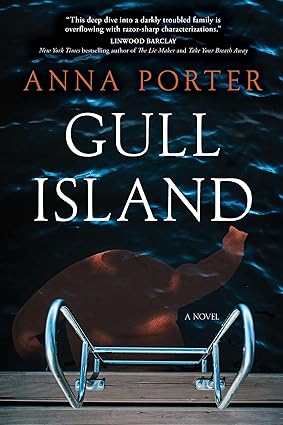Schatje's Favourite Books of 2023
Of the 110 novels I read this year, here are my favourites. The vast majority were published in 2023. It’s been a great year of reading!
Fiction by Canadians
Since I’m Canadian, I read a lot of novels written by Canadians. Here’s my baker’s dozen of favourites.
The Adversary by Michael Crummey https://schatjesshelves.blogspot.com/2023/09/review-of-adversary-by-michael-crummey.html
The Observer by Marina Endicott https://schatjesshelves.blogspot.com/2023/11/review-of-observer-by-marina-endicott.html
The Good Women of Safe Harbour by Bobbi French https://schatjesshelves.blogspot.com/2023/04/review-of-good-women-of-safe-harbour-by.html
The Forcing by Paul E. Hardisty https://schatjesshelves.blogspot.com/2023/02/review-of-forcing-by-paul-e-hardisty.html
Snow Road Station by Elizabeth Hay https://schatjesshelves.blogspot.com/2023/04/review-of-snow-road-station-by.html
The Story of Us by Catherine Hernandez https://schatjesshelves.blogspot.com/2023/03/review-of-story-of-us-by-catherine.html
Gin, Turpentine, Pennyroyal, Rue by Christine Higdon https://schatjesshelves.blogspot.com/2023/09/review-of-gin-turpentine-pennyroyal-rue.html
Rage the Night by Donna Morrissey https://schatjesshelves.blogspot.com/2023/09/review-of-rage-night-by-donna-morrissey.html
The Berry Pickers by Amanda Peters https://schatjesshelves.blogspot.com/2023/06/review-of-berry-pickers-by-amanda-peters.html
The Imposters by Tom Rachman https://schatjesshelves.blogspot.com/2023/06/revie-of-imposters-by-tom-rachman.html
All the Colour in the World by C S Richardson https://schatjesshelves.blogspot.com/2023/01/review-of-all-colour-in-world-by-cs.html
Everything There Is by M. G. Vassanji https://schatjesshelves.blogspot.com/2023/09/review-of-everything-there-is-by-m-g.html
Far Cry by Alissa York https://schatjesshelves.blogspot.com/2023/02/review-of-far-cry-by-alissa-york-new.html
American Fiction
Here are my “top 5” American novels read
in 2023.
Baumgartner by Paul Auster https://schatjesshelves.blogspot.com/2023/11/review-of-baumgartner-by-paul-auster.html
48 Clues into the Disappearance of My Sister by Joyce Carol Oates https://schatjesshelves.blogspot.com/2023/03/review-of-48-clues-into-disappearance.html
Tom Lake by Ann Patchett https://schatjesshelves.blogspot.com/2023/11/review-of-tom-lake-by-ann-patchett.html
The End of Drum-Time by Hanna Pylväinen https://schatjesshelves.blogspot.com/2023/08/review-of-end-of-drum-time-by-hanna.html
Stealing by Margaret Verble https://schatjesshelves.blogspot.com/2023/02/review-of-stealing-by-margaret-verble.html
Fiction from United Kingdom
These are my “top 10” 2023 books written
by authors from either England or Ireland.
All the Little Bird-Hearts by Viktoria Lloyd-Barlow https://schatjesshelves.blogspot.com/2023/12/review-of-all-little-bird-hearts-by.html
Old God’s Time by Sebastian Barry https://schatjesshelves.blogspot.com/2023/04/review-of-old-gods-time-by-sebastian.html
eden by Jim Crace https://schatjesshelves.blogspot.com/2023/08/review-of-eden-by-jim-crace-new-release.html
The Wren, The Wren by Anne Enright https://schatjesshelves.blogspot.com/2023/11/review-of-wren-wren-by-anne-enright-new.html
The Fascination by Essie Fox https://schatjesshelves.blogspot.com/2023/07/review-of-fascination-by-essie-fox.html
Trespasses by Louise Kennedy https://schatjesshelves.blogspot.com/2023/05/review-of-trespasses-by-louise-kennedy.html
Strange Sally Diamond by Liz Nugent https://schatjesshelves.blogspot.com/2023/07/review-of-strange-sally-diamond-by-liz.html
The Queen of Dirt Island by Donal Ryan https://schatjesshelves.blogspot.com/2023/02/review-of-queen-of-dirt-island-by-donal.html
ONE by Eve Smith https://schatjesshelves.blogspot.com/2023/09/review-of-one-by-eve-smith.html
So Pretty by Ronnie Turner https://schatjesshelves.blogspot.com/2023/01/review-of-so-pretty-by-ronnie-turner.html
International Fiction
These are my “top 5” 2023 books by
authors from countries other than Canada, U.S., England or Ireland.
His Favourite Graves by Paul Cleave (New Zealand) https://schatjesshelves.blogspot.com/2023/11/review-of-his-favourite-graves-by-paul.html
Magma by Thóra Hjōrleifsdóttir (Iceland) https://schatjesshelves.blogspot.com/2023/05/review-of-magma-by-thora-hjorleifsdottir.html
Someone Like Her by Awais Khan (Pakistan) https://schatjesshelves.blogspot.com/2023/10/review-of-someone-like-her-by-awais-khan.html
Stolen by Ann-Helén Laestadius (Sweden) https://schatjesshelves.blogspot.com/2023/02/review-of-stolen-by-ann-helen.html
Return to Valetto by Dominic Smith (Australia) https://schatjesshelves.blogspot.com/2023/06/review-of-return-to-valetto-by-dominic.html
Favourite Crime Series
I read the latest instalments in some
favourite crime series. Here are my top
five.
You Can’t See Me by Eva Björg Ægisdóttir https://schatjesshelves.blogspot.com/2023/07/review-of-you-cant-see-me-by-eva-bjorg.html - the 4th in the Forbidden Iceland series
The Opposite of Lonely by Doug Johnstone https://schatjesshelves.blogspot.com/2023/10/review-of-opposite-of-lonely-by-doug.html - the 5th book in the Skelfs series
Killing Moon by Jo Nesbø https://schatjesshelves.blogspot.com/2023/06/review-of-killing-moon-by-jo-nesb-new.html - the 13th in the Harry Hole series
Dead and Gone by Joanna Schaffhausen https://schatjesshelves.blogspot.com/2023/08/review-of-dead-and-gone-by-joanna.html - the 3rd in the Detective Annalisa Vega series
White as Snow by Lilja Sigurðardóttir https://schatjesshelves.blogspot.com/2023/10/review-of-white-as-snow-by-lilja.html - the 3rd in the Árora Investigation series




















